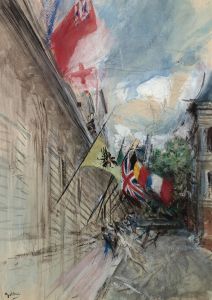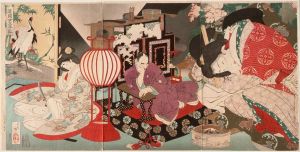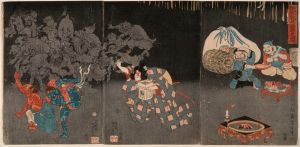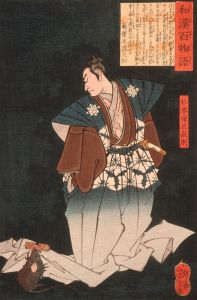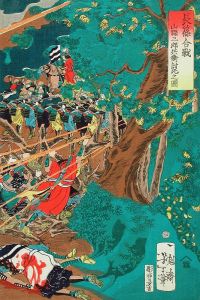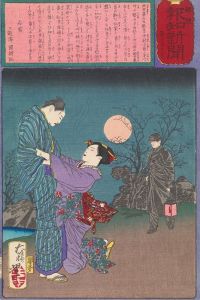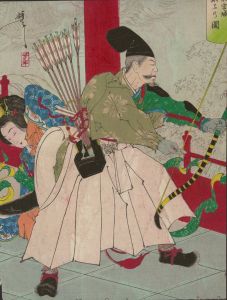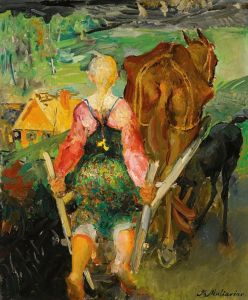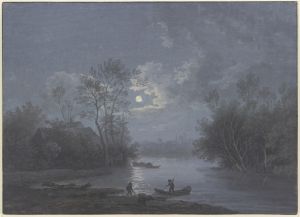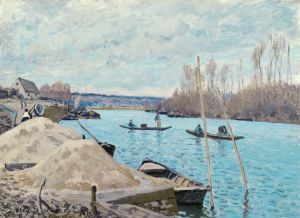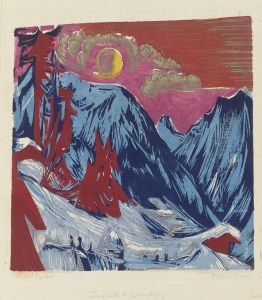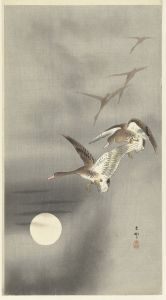
Soga no Gorō Tokimune Viewing the Moon after Rain in the Mountains
A hand-painted replica of Tsukioka Yoshitoshi’s masterpiece Soga no Gorō Tokimune Viewing the Moon after Rain in the Mountains, meticulously crafted by professional artists to capture the true essence of the original. Each piece is created with museum-quality canvas and rare mineral pigments, carefully painted by experienced artists with delicate brushstrokes and rich, layered colors to perfectly recreate the texture of the original artwork. Unlike machine-printed reproductions, this hand-painted version brings the painting to life, infused with the artist’s emotions and skill in every stroke. Whether for personal collection or home decoration, it instantly elevates the artistic atmosphere of any space.
"Soga no Gorō Tokimune Viewing the Moon after Rain in the Mountains" is a woodblock print created by the renowned Japanese artist Tsukioka Yoshitoshi. Yoshitoshi, born in 1839 and passing away in 1892, is celebrated as one of the last great masters of the ukiyo-e genre of woodblock printing and painting. His works are known for their dynamic composition, vivid colors, and often dramatic subject matter, reflecting both traditional Japanese themes and the influences of modernization during the Meiji era.
This particular print is part of Yoshitoshi's famous series "Tsuki hyakushi" (One Hundred Aspects of the Moon), which he produced between 1885 and 1892. The series consists of 100 prints, each depicting a scene related to the moon, drawing from various sources including Japanese and Chinese history, literature, folklore, and theater.
"Soga no Gorō Tokimune Viewing the Moon after Rain in the Mountains" portrays Soga no Gorō Tokimune, a historical figure from the Kamakura period. Gorō Tokimune, along with his brother Soga no Jūrō Sukenari, is known for the Soga Monogatari, a tale of revenge that has been a popular subject in Japanese literature and drama. The brothers sought to avenge the murder of their father by Kudō Suketsune, an event that took place in the late 12th century.
In Yoshitoshi's depiction, Gorō Tokimune is shown in a contemplative pose, gazing at the moon after a rainstorm in the mountains. The scene captures a moment of tranquility and reflection, contrasting with the often violent and tumultuous events of his life. The print is notable for its exquisite detail and the use of color to evoke the serene atmosphere of the moonlit night.
Yoshitoshi's "One Hundred Aspects of the Moon" series is highly regarded for its artistic quality and its ability to convey deep emotional and psychological states. The series reflects Yoshitoshi's mastery of the woodblock printing technique and his ability to blend traditional Japanese aesthetics with the influences of Western art that were becoming more prevalent during the Meiji period.
"Soga no Gorō Tokimune Viewing the Moon after Rain in the Mountains" is a prime example of Yoshitoshi's skill in capturing the essence of his subjects and the beauty of the natural world. The print not only serves as a visual representation of a historical figure but also as a meditation on themes of loyalty, revenge, and the fleeting nature of life, all under the serene and eternal presence of the moon.
Today, Tsukioka Yoshitoshi's works, including this print, are highly valued by collectors and are considered important cultural artifacts that offer insight into the artistic and cultural transitions of late 19th-century Japan. His legacy continues to influence artists and is celebrated in exhibitions and collections around the world.





